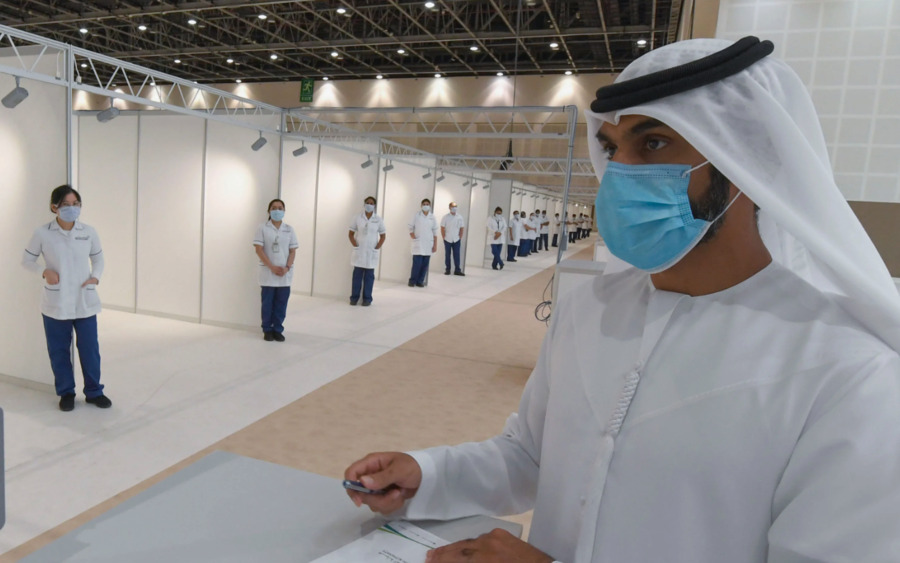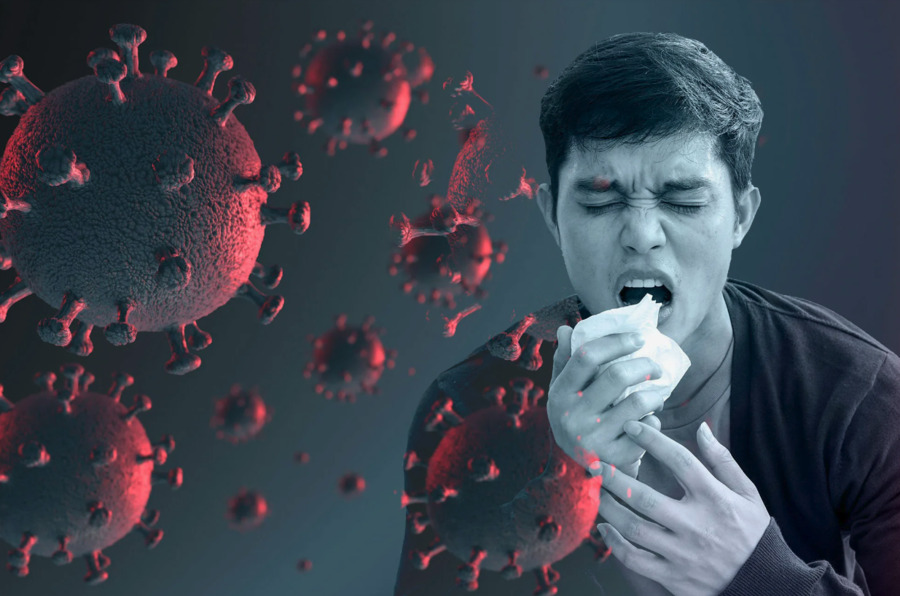COVID-19 is a disease caused by a novel coronavirus, SARS-CoV-2, which emerged in Wuhan, China, in late 2019. As a member of the coronavirus family, which includes other pathogens such as those causing SARS and MERS, SARS-CoV-2 is particularly notable for its rapid transmission and broad spectrum of human health effects. The virus primarily affects the respiratory system, but can also affect other organs and lead to severe and potentially fatal complications. The rapid global spread of the virus has been facilitated by modern travel patterns and asymptomatic carriers, resulting in millions of infections worldwide and in the UAE in particular, and has necessitated unprecedented global public health measures and new sanitary regulations for deep cleaning abu dhabi.
Detailed Symptoms of COVID-19
COVID-19 symptoms are diverse, reflecting the virus’s impact on various bodily systems and its progression from mild to severe stages:
– Common Symptoms: Fever, often one of the first signs of infection, suggests the body’s attempt to fight off the virus. A dry cough, which is irritating and persistent, and fatigue are also prevalent, often causing significant discomfort and debilitation.
– Sensory Loss: A sudden loss of taste or smell has emerged as a distinctive symptom associated with COVID-19, affecting the patient’s ability to enjoy foods and detect potentially dangerous odors like gas or smoke.
– Less Common Symptoms: These can include body aches, often described as similar to those experienced during the flu; sore throat; diarrhea; conjunctivitis; and various types of headaches. Skin rashes or strange discolorations on fingers or toes, sometimes referred to as “COVID toes,” are also noted.
– Severe Symptoms: These symptoms require immediate medical attention and include difficulty breathing, chest pain, and neurological signs such as the inability to move or speak, which may indicate severe involvement of respiratory or nervous systems.

Transmission of COVID-19
COVID-19 is known for its highly infectious nature, spreading through several key routes:
– Airborne Transmission: This is the primary mode of virus transmission, where tiny droplets containing the virus are expelled by an infected person through coughing, sneezing, or talking. These droplets can linger in the air and be inhaled, leading to new infections.
– Household Contact: The virus can spread through direct physical contact with an infected person or through indirect contact by touching surfaces that an infected person has contaminated. This includes everyday items like tables, doorknobs, and personal devices, highlighting the importance of regular disinfection in shared spaces.
– Airborne and Dustborne Transmission: In dusty environments, the virus can attach to dust particles, which can be inhaled by others, extending the range of transmission beyond direct contact.
– Fecal-Oral Transmission: This less common route involves the virus entering the body through contaminated food or water, or through contact with contaminated surfaces, followed by touching the face or mouth.
Epidemiology of COVID-19
The progression of the COVID-19 pandemic is marked by key events that highlight its rapid spread and global impact:
– Initial Outbreak: First identified as a cluster of pneumonia cases in Wuhan, the disease quickly transcended borders, with cases multiplying due to global travel and human-to-human transmission.
– Global Spread: By January 2020, the virus had been identified as belonging to the coronavirus family, and its genome was sequenced, which helped in developing diagnostic tests.
– Pandemic Declaration: Recognizing the widespread nature of outbreaks across continents, WHO declared COVID-19 a pandemic on March 11, 2020. The declaration called for urgent and aggressive action from all countries to fight the virus spread.
– Global Reach: By December 2020, even remote regions like Antarctica reported infections, underscoring the pervasive spread of the virus.
– Public Health Emergency Conclusion: In May 2023, the WHO declared an end to the global public health emergency, although it emphasized the need for continued vigilance and adaptation to manage ongoing cases.
COVID-19 in the UAE
The response to COVID-19 in the UAE has been robust and multi-faceted:
– Early Cases and Government Response: Following the detection of the first cases among tourists from Wuhan, the UAE government swiftly enacted measures including extensive testing, contact tracing, and public health education to prevent the spread.
– Trends and Measures: As cases rose, driven by local transmission and infections among travelers, the UAE implemented strict quarantine measures, travel restrictions, and later, mass vaccination campaigns.
– Decline in Cases: By 2022, thanks to widespread compliance with public health directives and effective vaccination, the UAE saw a significant decline in COVID-19 cases and a stabilization of its public health sector.

Combating COVID-19: Strategies and Measures
The global fight against COVID-19 involves several strategies that have proven effective:
– Vaccination: Accelerated development and distribution of vaccines have been crucial. High vaccination rates are associated with reduced transmission rates and severity of cases.
– Social Distancing: Keeping physical distance from others helps minimize the risk of airborne transmission, especially in crowded or enclosed spaces.
– Hygiene Practices: Regular handwashing with soap and water, along with the use of hand sanitizers, is effective in killing the virus. Covering coughs and sneezes and avoiding touching the face also play critical roles in preventing virus spread.
– Disinfection Protocols: Use of effective disinfectants on surfaces in homes, workplaces, and public spaces helps reduce the risk of indirect transmission. Disinfectants like sodium hypochlorite (bleach) and hydrogen peroxide are particularly effective against the virus.
Overview of COVID-19 Vaccines
As the global fight against the COVID-19 pandemic continues, several vaccines have been developed to combat the virus. These vaccines employ different technologies and have been authorized in various regions worldwide. Here’s a closer look at some of the key vaccines and their unique characteristics:
BioNTech and Pfizer
The BioNTech and Pfizer vaccine, known commercially as Comirnaty, utilizes mRNA technology, a novel approach in vaccine development. This vaccine delivers mRNA encoding the coronavirus surface spike (S) protein, prompting the body’s cells to produce the protein and stimulate the immune system to recognize and combat the virus. The mRNA is encapsulated in lipid nanoparticles, which protect it until it is taken up by the cells. This vaccine has been authorized for use in the European Union, Australia, Saudi Arabia, Switzerland, Norway, Iceland, Serbia, and other countries.
Moderna
The Moderna vaccine, also based on mRNA technology, works similarly to the Pfizer-BioNTech vaccine. It introduces synthetic mRNA into the body that encodes for the S-protein of the virus. The body’s immune system then recognizes these proteins as foreign and mounts a response that can be reactivated if the actual virus later infects the body. Moderna’s vaccine has been approved for use in the European Union, Norway, Iceland, Greenland, and the Faroe Islands.
AstraZeneca
The AstraZeneca vaccine, developed in collaboration with the University of Oxford, is a viral vector vaccine. Unlike mRNA vaccines, this vaccine uses a harmless chimpanzee adenovirus modified to deliver the S-protein gene of the coronavirus into cells. The adenovirus serves as a delivery system, or vector, to introduce the genetic material that triggers an immune response against COVID-19. This vaccine is known for its ease of storage and transport, as it does not require the ultra-cold temperatures needed for some mRNA vaccines, making it a vital tool in global vaccination efforts.
CoronaVac
CoronaVac, developed by Sinovac Biotech, is an inactivated vaccine, which means it uses a virus particle that has been killed so that it cannot cause disease. Inactivated vaccines traditionally use a form of the virus that has been killed with heat or chemicals. The immune system still recognizes the inactivated virus as a danger and mounts an immune response. However, this type of vaccine does not typically provide immunity that is as strong as live vaccines. CoronaVac is primarily used in China.
Janssen
The Janssen vaccine, produced by Johnson & Johnson, is another viral vector vaccine. It uses a different adenovirus than the AstraZeneca vaccine and is engineered to produce the coronavirus spike protein in cells after vaccination. One of the main advantages of the Janssen vaccine is that it requires only one dose, unlike most other COVID-19 vaccines, which require two doses. This makes it a crucial option for rapid, large-scale vaccination campaigns, especially in areas where reaching people is challenging.
Conclusion
COVID-19 remains a significant global health threat, requiring ongoing and adaptive responses. Public health measures, combined with scientific advancements in treatments and vaccines, are vital for controlling outbreaks and mitigating the impact of the virus. Continued global cooperation and public compliance with health directives are essential as the world navigates this challenging period.

Surfer, mother of 2, audiophile, Swiss design-head and growthhacker. Making at the junction of beauty and sustainability to craft experiences both online and in real life. Let’s design a world that’s thoughtful, considered and aesthetically pleasing.


